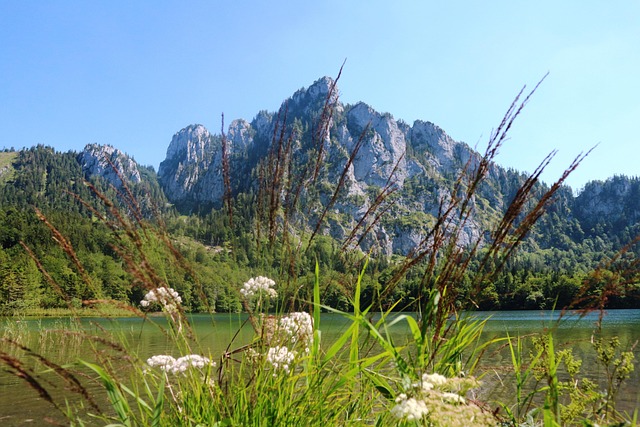Architectural Vignettes: The Best of Austria’s Urban Landscapes
Austria, a country rich in history, culture, and stunning landscapes, offers an array of urban environments that showcase a blend of architecture influenced by various epochs and artistic movements. From the majestic baroque palaces to modernist masterpieces, architectural enthusiasts have ample opportunities to explore vibrant cityscapes. In this article, we will delve into the architectural vignettes of Austria’s urban landscapes, examining the unique characteristics that contribute to their charm.
The Historical Tapestry of Vienna
As the capital of Austria, Vienna stands as a testament to the country’s illustrious history. Its architecture is a vivid tapestry woven from various styles – Gothic, Renaissance, Baroque, and Modernist influences can be seen throughout the city. The most iconic landmark, St. Stephen’s Cathedral, towers over the city center, featuring a stunning combination of Romanesque and Gothic elements. With its brightly colored tile roof, it is a symbol of Vienna’s rich ecclesiastical heritage.
Nearby, the Hofburg Palace showcases the opulence of the Habsburg dynasty, integrating Renaissance, Baroque, and Rococo styles. The palace complex has served numerous purposes throughout history, including as the imperial palace and the residence of several Austrian presidents. Today, the Hofburg functions as a cultural institution, housing museums and exhibitions that reflect the imperial past of Austria.
Art Nouveau Elegance in Grinzing
Venturing beyond the bustling city center, the Vienna district of Grinzing, known for its wine taverns and vineyards, is home to a collection of stunning Art Nouveau architecture. This movement, which flourished from the late 19th to early 20th century, emphasizes organic forms and intricate designs. One of the most noteworthy buildings in Grinzing is the Wiener Werkstätte, a collective of artists and craftsmen that produced exquisite objects, textiles, and furniture during this period.
Notable examples include the beautiful Villa Wieden, characterized by its flowing lines, floral motifs, and vibrant colors. Visitors can stroll through the charming streets, absorbing the artistic spirit imbued in the buildings and the surrounding landscapes, offering a peaceful escape from the city’s hustle and bustle.
The Modern Marvel of Graz
Moving to the second-largest city in Austria, Graz presents a fascinating contrast between historical architecture and modern innovations. The Graz Kunsthaus, also known as the “Friendly Alien,” captures this blend perfectly. This contemporary art museum, designed by architects Peter Cook and Colin Fournier, features a bulbous, futuristic façade that contrasts sharply with the medieval architecture surrounding it. Its cutting-edge design reminds us of the innovative spirit of the city.
In Graz, you’ll also find the Murinsel, an artificial island in the River Mur that was constructed as part of the city’s regeneration project. This stunning structure, shaped like a sea shell, serves as a bridge, a café, and a playground, encapsulating Graz’s commitment to embracing modernity while preserving its historical roots.
Salzburg: Baroque Beauty
Next, we travel to Salzburg, the birthplace of Mozart and a UNESCO World Heritage Site, where baroque architecture reigns supreme. The Salzburg Cathedral is an architectural jewel with its twin towers, impressive dome, and richly adorned interiors that invite visitors to marvel at its beauty. The cathedral’s design reflects the grandeur associated with the city’s religious significance during the Baroque period.
Adjacent to the cathedral, Hohensalzburg Fortress dominates the skyline, a well-preserved medieval fortress. Its formidable stone walls provide stunning panoramic views of the city and surrounding Alps, an experience that blends history with the breathtaking natural landscape.
Innsbruck: Alpine Heritage
Nestled in a valley surrounded by the towering Alps, Innsbruck exudes a distinctive charm that harmonizes with its mountainous backdrop. The Golden Roof (Goldenes Dachl) is a highlight of Innsbruck’s historical architecture, a late Gothic structure adorned with 2,657 fire-gilded copper tiles. Erected for Emperor Maximilian I, the rooftop is a symbol of the city’s rich heritage and connection to its imperial past.
The Nordkette Cable Car, which ascends into the majestic heights of the Alps, adds a modern twist to the historical vibe of Innsbruck. This cable car system not only makes the city accessible to outdoor enthusiasts but also stands as a marvel of contemporary engineering. The architectural lines of the stations complement the natural surroundings, creating a perfect blend of adventure and aesthetic beauty.
The Fusion of Tradition and Innovation in Linz
Linz, Austria’s third-largest city, is notable for its fusion of tradition and modern innovation. The Basilica of the New Cathedral (Neuer Dom) is one of the most prominent examples of neo-Gothic architecture in the country. With its towering spires, it features an impressive organ and beautiful stained-glass windows that narrate the spiritual journey of its visitors.
In stark contrast, the Ars Electronica Center is a beacon of contemporary architecture and digital art, promoting the combination of technology and creativity. This futuristic structure hosts interactive exhibitions on technology, art, and social issues, engaging visitors in thought-provoking ways and pushing the boundaries of creativity.
Conclusion: A Journey Through Austria’s Urban Landscapes
Austria’s urban landscapes present a unique panorama of architectural history, showcasing the rich tapestry of influences that have shaped the country’s identity. From Vienna’s imperial grandeur to Graz’s modern marvels and Salzburg’s baroque elegance, each city offers glimpses into Austria’s storied past and dynamic present. The variety of styles reflects the diverse cultural influences that have swept through the region, making it a treasure trove for architecture enthusiasts and casual visitors alike.
As one travels through these urban environments, it becomes evident that Austria’s architecture is not merely a backdrop but a significant part of the narrative that unfolds in every corner of this stunning country. Each architectural vignette serves as a reminder of the past while inspiring future innovations, ensuring that Austria remains a captivating destination for generations to come.


